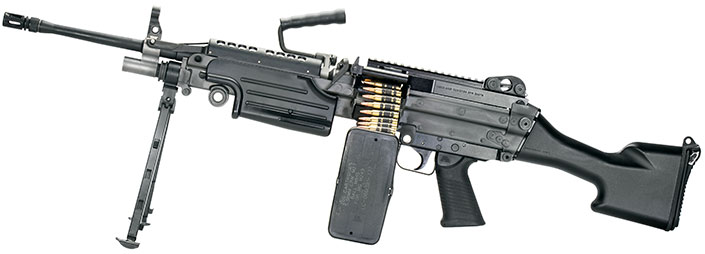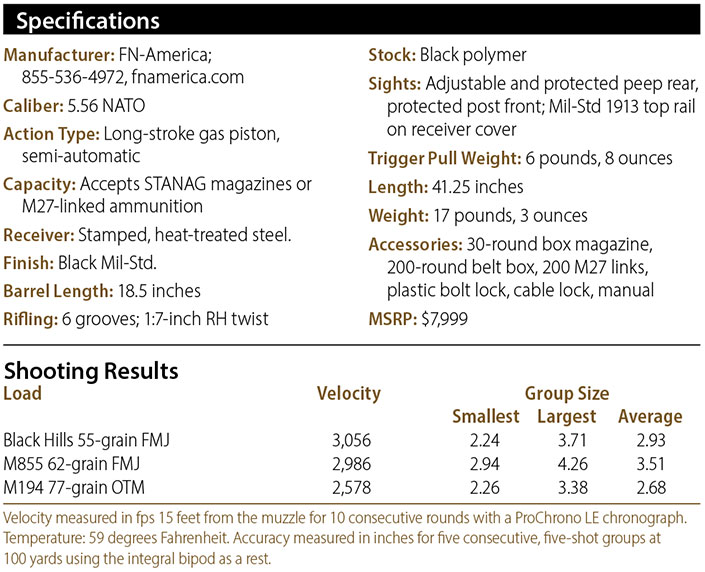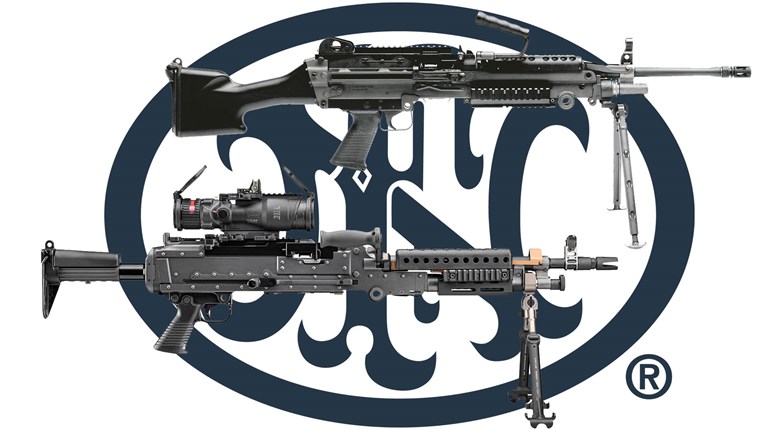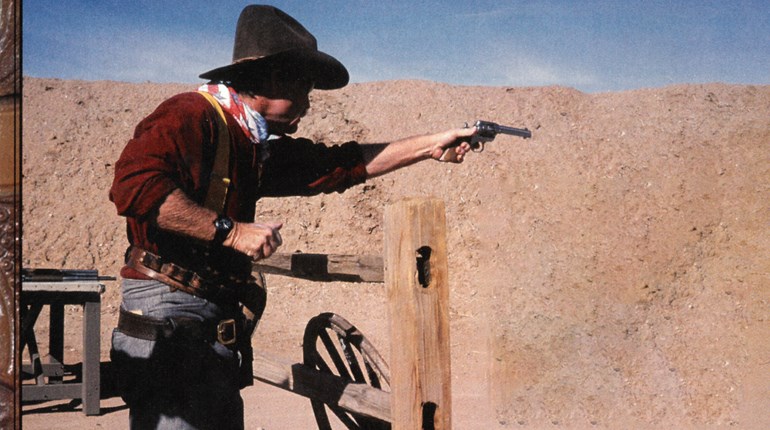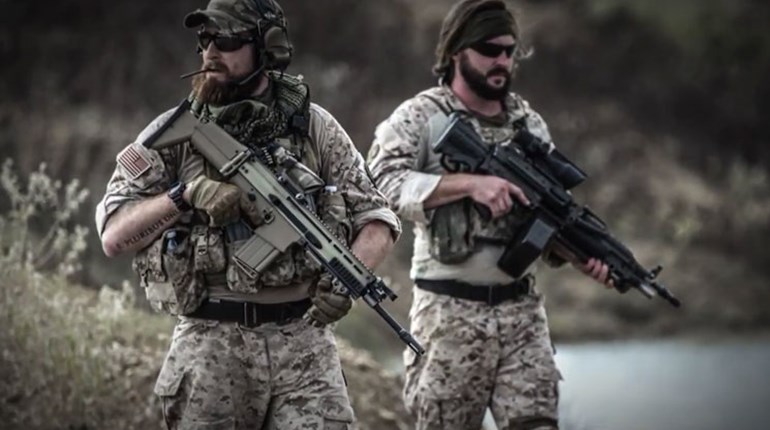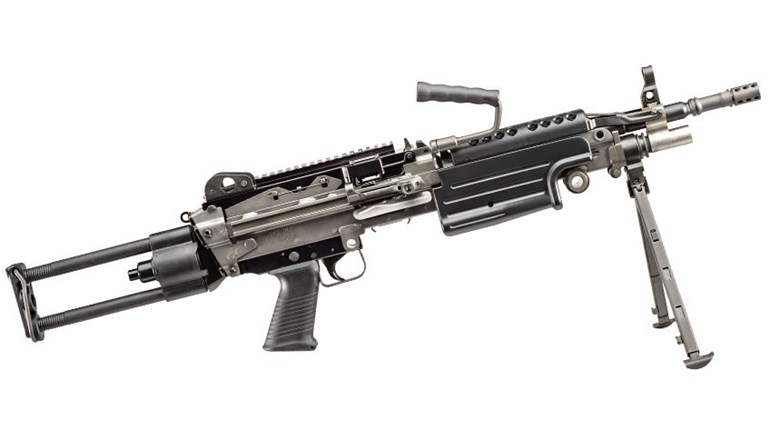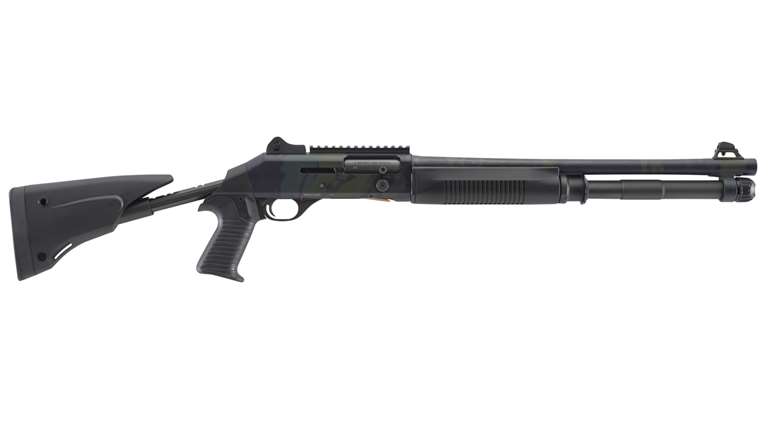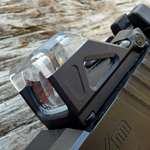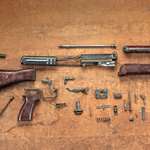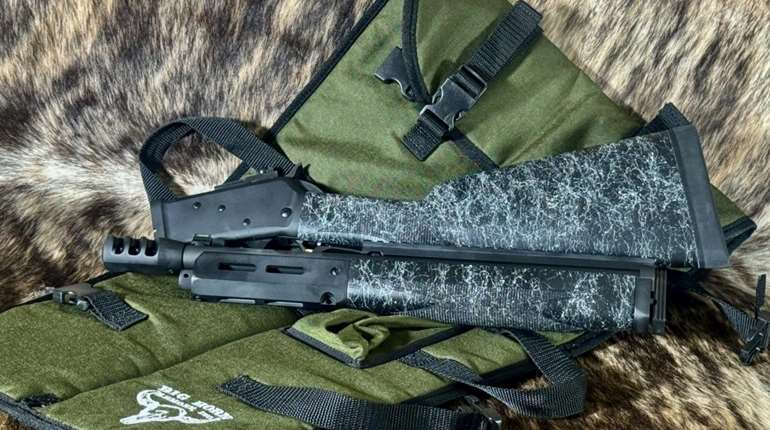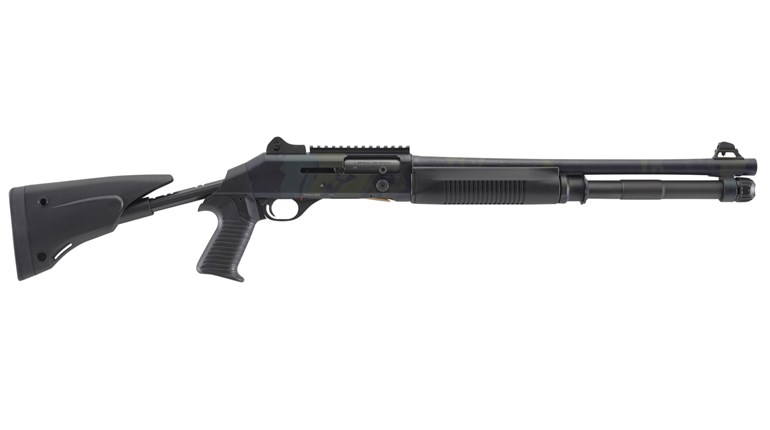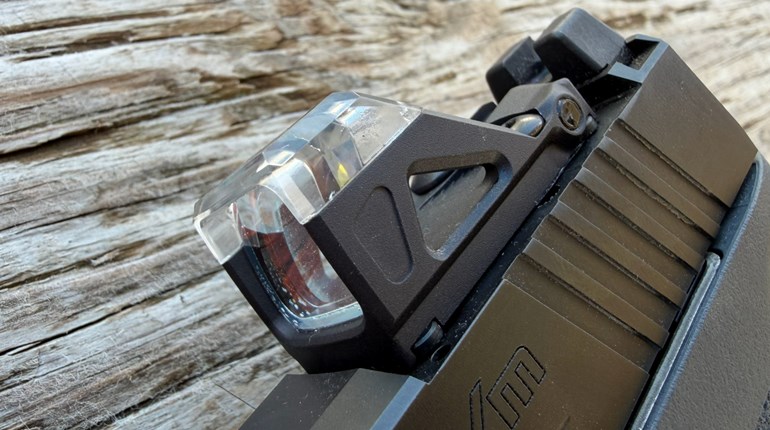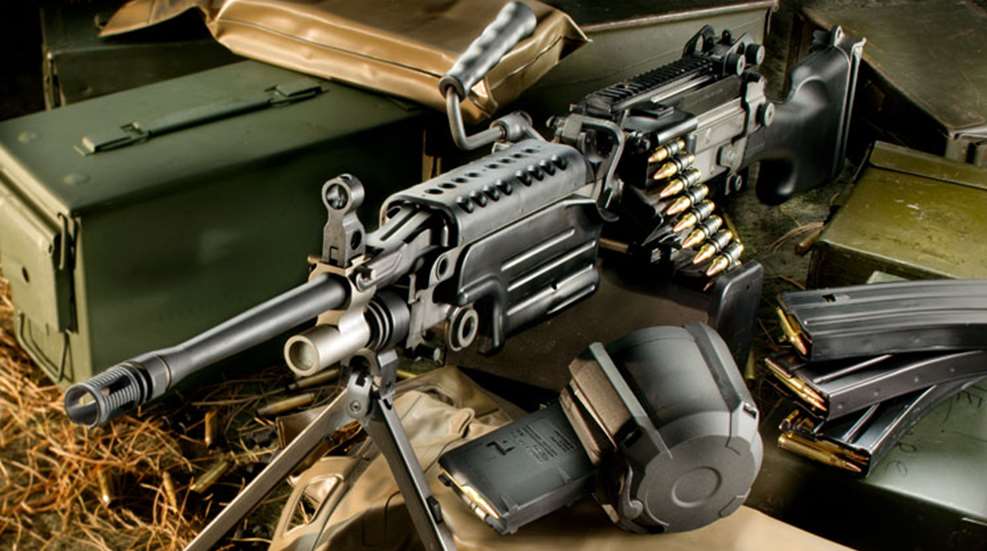
In 1974, in the wake of its tremendously successful 7.62 NATO-caliber MAG 58 (Mitraleuse a Gaz, or machine gun by gas), Fabrique National (FN) of Belgium, embarked on a new venture to design a smaller, lighter and more portable weapon chambered in 5.56 NATO (.223 Rem.). Under the direction of Ernest Virvier, the Minimi (Miniature Mitraleuse) was born.
Although the Minimi became the XM249 in U.S. Army testing in 1978, it immediately took on the unofficial moniker, “SAW,” a name first given to the failed experimental 6 mm Squad Automatic Weapon of 1970. What’s more, following the adoption of the M249 in 1982, the U.S. Army gave it the SAW designation in 1984, with the gun seeing USMC adoption in 1985. Ten years later, the M249 received the official designation LMG for Light Machine Gun, but the SAW name held on well into the 21st Century.
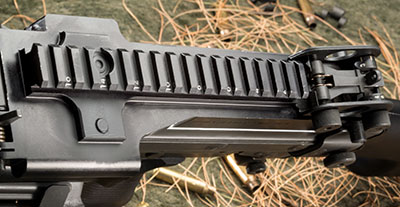
Since its U.S. Military adoption, the M249 has been built by FN Manufacturing, of Columbia, SC. As such, the gun differs from the Minimi in having only one gas setting (and rate of fire), a top rail with a Mil-Std 1913 rail (often erroneously called a “Picatinny” rail), a re-angled pistol grip and an improved buttstock and handguard. Since 1994, the M249 is also offered with only 1:7-inch rifling twist for use with the standard M855 and now M855A1 family of 5.56 NATO ammunition.
Like the FN MAG 58, the M249’s operating system utilizes a long-stroke gas piston and it fires from the open-bolt position in full-automatic only. Housed in the top cover, the M249’s shuttle system, which draws the M27-linked 5.56 NATO ammunition into firing position is essentially a scaled-down version of that used in the MAG 58 and first used in the World War II German MG 34 and MG 42 machine guns. Here, the feed arm pulls the cartridge halfway into line, as the bolt moves rearward and the rest of the way into position, as it returns forward. The M249 also uses a non-reciprocating cocking handle on the right side and has a three-position bipod, which folds up into the handguard. From here, however, things do begin to change.
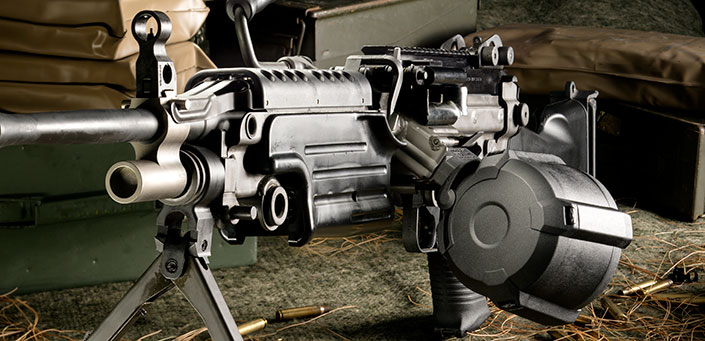
Unlike the MAG 58’s rear-locking bolt, that of the M249 resembles the FNC bolt, rotating with two robust front lugs locking into a barrel extension more like the M60 machine gun. The firing pin is also attached to the operating rod and runs through the bolt to fire the cartridge just after the bolt is rotated into battery. Fired casings also eject from the side instead of the bottom and a spring-loaded dust cover is forced down by the bolt and returns back up automatically. The M249’s barrel change is also simpler.
Having a forward-locking bolt does not require the heavy, long, steel receiver of the rear-locking MAG 58 (M240), and allows the M249 receiver to be made largely of high-grade sheet steel stamped (pressed) into shape, save for the trunnion at the front. This also more resembles the construction of the M60 and results in less weight. One of the M249’s salient features, however, is totally unique.
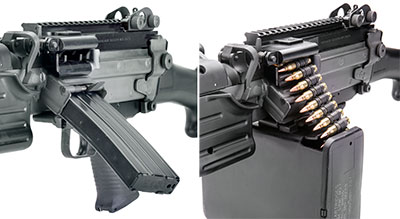
Directly beneath the feed chute on the left side of the M249 is a magazine well at a 45-degree angle. Serving as an alternate feed source, this opening will accept any Mil-Spec M16-type magazine, allowing the gun to operate from a magazine if linked 5.56 NATO ammunition is not available. In fact, loaded M16 magazines can be loaded into the magazine well and fired almost as efficiently as belted ammunition, especially where extended-capacity magazines like the Magpul D-60 drum and SureFire magazines are concerned. The automatic magazine well dust cover contains the magazine catch and pressing the cover down allows the magazine to be removed.
With the standard 18.5-inch barrel, the M249 measures 41 inches long. Firing at the rate of 800 rounds per minute, the gun has an effective range of 770 yards. Having a three-position carrying handle, the gun can be transported by one man, as well as fired standing or prone using its three-position bipod, mounted on M122A1 and M192 tripods and several vehicle mounts.
The M249’s top rail can host a variety of optics and other sighting aids and a new handguard can mount a rail on each side for a laser designator, light or other gear. The barrel can be changed in seconds by simply cocking the bolt to the rear and pulling the barrel forward while rotating the barrel latch to the rear. A new, adjustable stock is also now in use for the M249 together with a 200-round (silent) canvas belt bag.
The M249 has been used in battle by the U.S. Military since 1989 in Panama, both Gulf Wars and Afghanistan. With more than a quarter of a century under its belt, it will remain in service with all factions of America’s fighting forces (except for the USMC, which has opted for the magazine-fed, heavy-barrel M27). Now, the M249 has entered the U.S. civilian market as a semi-automatic-only rifle.
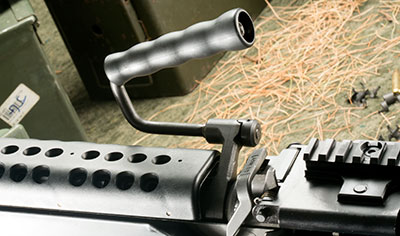
The M249S
In somewhat of a nutshell, virtually all the external visual features of the M249 are identical with those of its semi-automatic M249S sibling, and it is impossible to distinguish one from the other—until you get inside. There, things change rapidly, together with the operation and disassembly/reassembly of the M249S. While the receivers of both guns begin life alike, a considerable number of steps have been taken to assure none of the major internal components will interchange, including the fire-control group.
Rather than fire from the open-bolt position, the M249S fires with the bolt closed, necessary to meet BATFE requirements. As such, the operating rod, bolt carrier, bolt and fire control all differ from those of the full-automatic M249, as do the guide rails within the receiver itself. In addition, the M249S uses a spring-loaded firing pin and a linear hammer (called a slide hammer by FN).
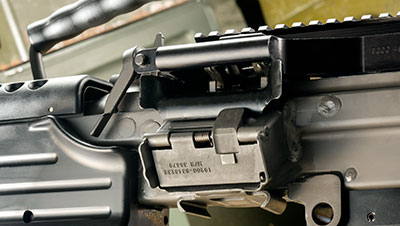
To operate this hammer, there is an additional, opposite-wound, coil spring around the main recoil spring to drive the hammer forward. This hammer spring adds to the force needed to draw back the cocking handle of the M249S. When released, the handle springs forward under the force of the main drive (recoil) spring, leaving the hammer cocked against its spring by the sear.
M249S Operation
As with the M249, the hammer of the M249S cannot be cocked with the safety “on.” To load a linked belt, point the M249S in a “safe” direction, cock it and push the cross-bolt safety above the pistol grip to the right (the “on” position). Then depress the opposing tabs on each side of the rear of the top cover in and pull up to open the cover. Take the belt with the link loops on top and lay it on the feed tray with the first round in the center, hold the belt in place and close the cover. With the cover closed, a belt can also be pushed into the feed tray until it stops. Point the M249S downrange, push the safety to the left (“off”) and pull back the cocking handle all the way and release it to go forward. As it does, the bolt will push the first cartridge forward out of the link and down into the chamber. Then put the safety back “on” until you are on target and ready to fire.
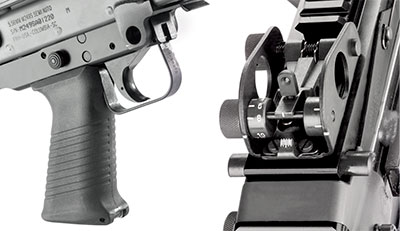
When the trigger of the M249S is pressed, the sear is lowered just enough to release the hammer to go forward, striking the firing pin to fire the cartridge. As the bullet passes the gas port, expanding gases enter the gas block and cause the long-stroke piston/operating rod, bolt and hammer to move to the rear to perform a sequence of functions. The bolt rotates to extract the fired case, the dust cover is cammed open, the bolt begins to force the curved feed channel to the left for the feed pawls to engage a new linked cartridge, the rear of the fired case strikes the fixed ejector forcing the case out of the ejection port, the hammer passes over the sear, disconnecting the sear to spring back up and the entire group stops against the buffer housed in the buttstock. If there had been a link left in the feed tray from a previous cartridge it would have been forced out the right side port of the top cover.
On the return forward, the hammer is stopped by the sear, the bolt forces the feed channel and the new cartridge into line with the chamber and as the bolt contacts the head (rear) of the cartridge it strips it forward, out of the link and down into the chamber.
If a box magazine is used, it is inserted into the magazine well lying at a 45-degree angle just beneath the gun’s feed tray. Inserting a magazine pushes in the magazine well dust cover, the top of which has a fixed magazine catch. With the magazine in place, a linked ammunition belt cannot be used. Ammunition is fed from the magazine and ejected from the M249S in much the same way as with the linked belt, except that the top cover’s feed-shuttle system has no function and simply goes along for the ride.
While similar to that of the M249, field stripping the M249S has important differences and studying the lengthy owner’s manual first is a must, as are safety glasses.

Shooting the M249S
The M249S owner’s manual recommends shooting only military-type ammunition meeting 5.56 NATO specifications, as expanding commercial bullets may cause malfunctions in feeding, especially from box magazines. The three types of ammunition selected were Black Hills 55-grain FMJ M193 equivalent, 62-grain M855 and USMC M194 Mod 0 77-grain OTM Match.
In testing the M249S, several optics were used, including the military-grade DI Optical DCL110 Red Dot optic with an 80x50 mm screen and automatic trajectory compensator for mounted machine guns up to the M134D Minigun. Also new from DI Optical was the DCL30 Red Dot for M249 and M4 platforms, with its 11 settings and more than 8,000 hours run time. A companion optic is the rugged DCL3X extender and all DI Optics are submersible to 30 feet. For accuracy testing, I used the Leupold MK 6, 3-18x44 mm Tier 2 Sniper Scope recently adopted by the U.S. Army.
The FN M249S uses a hammer-forged barrel of match quality, but stems from a firearm designed for area fire rather than competition. The quick-change barrel has necessary play for fast removal and there is also movement in the hinged buttstock. Additionally, the trigger pull runs from 4 to 6.5 pounds, and the M249S’s slide hammer has a relatively slow lock-time. Still, it is great fun.
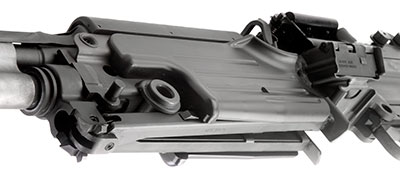
Firing the M249S with the handguard on sandbags revealed that the M249S wants to be shot from the bipod (or a mount), but the extended bipod made the gun too high for me. Folding the bipod forward to rest on a sandbag reduced five-shot groups to half the size when resting on the handguard. In shooting more than 200 rounds fed via belts and magazines alike, there were no malfunctions.
The FN M249S is as close to a SAW as the overwhelming majority of us can own. It is a piece of historic militaria from a company that has made some of the finest firearms in the world for more than 125 years, and it is one you and your family can enjoy shooting to your heart’s content. Just be sure to budget for a whole lot of ammo.
